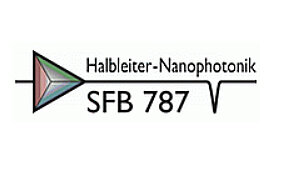
www.sfb787.tu-berlin.de/menue/home/
Co-funded by: German Research Council DFG
Duration: 01/2008 - 12/2011
Cooperation
- TU Berlin
- HU Berlin
- Univ. Magdeburg
- Ferdinand-Braun-Inst. FBH
- Weierstraß-Inst. WIAS
- Konrad-Zuse-Zentrum ZIB
The Epitaxy group at HHI participates in a Berlin-based research group bringing together experts in the fields of materials technology, modelling and device technology to implement new nanostructures like quantum dots in GaAs-, InP- and GaN-based materials systems.
Quantum dot (QD) based devices offer a vast freedom to manipulate material properties and thus open up venues for new applications that go way beyond what is possible with other material systems. New possibilities for telecom, optronic and sensor systems are created. HHI activities base on MOVPE as the production oriented growth technology of choice for InP-based InGaAsP materials. With this material system HHI is capable to drive the development of the whole spectrum of photonic devices. We especially target to use self organised QDs in buried heterostructure as an approach for new 1550 nm telecom components:
- Highest QD density structures for e.g. high power lasers
- High QD density broadband SOA for high gain requirements
- QD SOA for high bit-rate signal processing applications
- Low QD density single photon emitters for quantum cryptography



